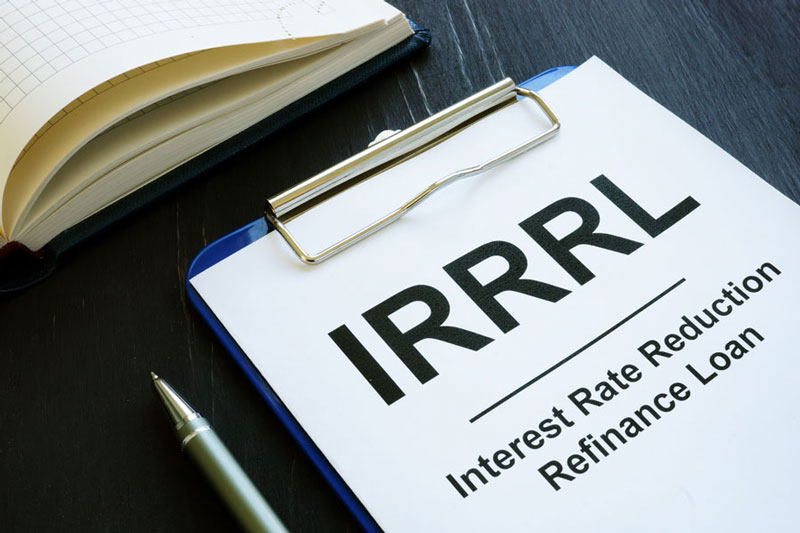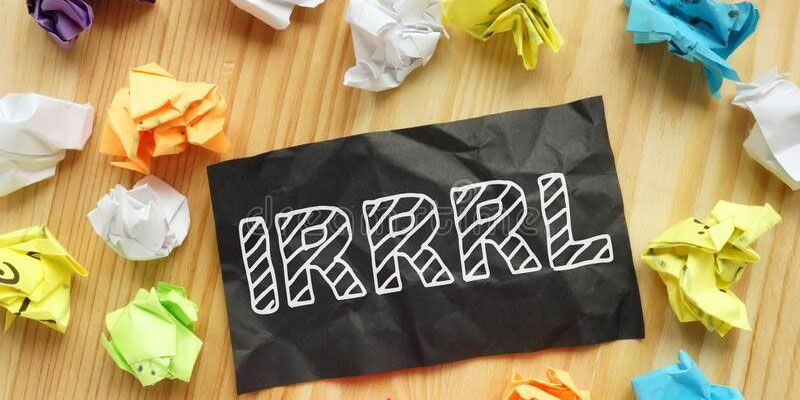It is possible to cut the lending rate over a current VA loan by refinancing it with a loan from the Veterans Administration (VA) known as IRRRL.
What is IRRL?
IRRRLs don't need to go through any kind of credit assessment. They can contain the remaining balance of the preceding loan, with any closing expenses and a maximum of two reduction points. Please be aware that granting a loan may depend on some lenders' different credit criteria. As a result, the VA strongly suggests contacting several different lenders to identify the best financial solution to meet your requirements.
The Veterans Affairs Administration (VA) of the United States of America provides a specific kind of mortgage known as a bank rate decrease refinancing loan (IRRRL) to war veterans and their loved ones. The IRRRL is a VA-to-VA lending procedure, also recognized as the VA Simplify Remortgage Program. It is intended to enable property owners who have already retained VA loan payments to remortgage their liabilities at a reduced interest rate. Also, truncate the term of their line of credit, or transform an extendable line of credit (ARM) into a home loan. These options are only available to individuals who hold VA loans.
The IRRRL, too, is called the VA Simplified Refinancing Plan because the procedure is relatively simple and can be completed quickly. Homeowners do not require a minimum credit rating or a new Declaration of Qualification to qualify for an IRRRL, nor is an appraisal of the lender's house or property required. There is no need for a basic wage, and there is also no limit placed on the amount of income a borrower may make to be considered for the VA expedite initiative.
The Interest Rate Reduction Refinance Loan procedure is far more efficient than other methods, which results in significant savings for veterans and their families in terms of work, time, and money. However, the IRRRL program is only able to refinance debts that are associated with the VA. It is forbidden to utilize the money from the refinancing to pay down any other type of mortgage than one guaranteed by the VA.
How the Process of Obtaining a Loan with a Reduced Interest Rate (IRRRL) Works?

The requirements for an IRRRL are quite lenient, and candidates who currently hold a Loan modification are practically guaranteed to be accepted for the refurbishment. However, they should apply to a lender that the Veterans Affairs Department approves. Although there is no upper restriction on how much money a borrower can loan, creditors will take into account the responsibility restrictions that the VA is permitted to absorb when deciding how much money they are prepared to refinance a borrower for. The minimum benefit that may be granted to a veteran who meets the requirements is $36,000; however, lenders will typically provide as much as four times that value, based on the limitations imposed by the local county.
A substantial financial benefit must exist for the debtor in the home mortgage loan. Either the rate of interest on the second mortgage should be lower than the number on the previous mortgage, or the mortgage costs must be cheaper than they were before. The only time this is not the case is when the borrower is switching from an adjustable-rate mortgage to a home loan.
Even in comparison to the requirements for other types of VA loans, the occupancy criterion for something like an IRRRL is far laxer. Borrowers can refinish homes they formerly resided in but have since converted into rental homes, rental units, or holiday homes, thanks to the IRRRL program. It is unnecessary to have an appraisal done on the property covered by the loan to be eligible for the mortgage.
Who is qualified to participate in the IRRL program?
The following types of borrowers could be eligible for this particular refinancing loan:
- Veterans, personnel of the Army and Military Police who have been summoned to combat service, and members of the current military
- Members of the Active Reserve and Army Reserve who have completed six years of honorable service and certain spouses who have passed away.
To be considered for eligibility, the veteran or government employee must have been released under terms other than disgraceful and must also fulfill the standards for the duration of duty.
The Veteran must provide occupancy certification, the Military veteran's partner, or a dependent child to qualify for a Veterans Administration (VA) loan.
Things to Think About When Refinancing Your Mortgage to Get a Lower Interest Rate (IRRRL)
In contrast to other federal loans, an IRRRL does not obligate the borrower to pay monthly mortgage insurance. Nevertheless, these loans have funding costs attached to them; these fees vary based on the credit, but they are typically around 0.5 percent. Borrowers can avoid the upfront payment of the fees by either including the processing expenses in the total amount of the loan or agreeing to a greater interest rate.
To be eligible for refinancing, the debt repaid must be the primary mortgage on the estate. If the homeowner already has a different line of credit that is not a VA debt, those who and the borrower will need to agree to make the existing mortgage a subordinated lien, which is more generally called a second mortgage. This will allow the new IRRRL to become the primary mortgage on the property. If the borrower falls behind on their payments, the creditor of this loan will not be repaid until after they have received their money from the VA loan.
What Are Loans Available Under This Program?

On any loan, the charged interest rate can be negotiated between the veteran and the lender. A VA maintenance fee must be paid if the veteran is excused from paying the cost because they are receiving disability compensation. You can pay the financing charge in cash or roll it into the loan. A Veteran, their spouse, or a child of a service member currently on active duty must attest that they intend to inhabit the property. VA does not demand an assessment for modifying an IRRRL.



